An S&OP implementation requires many changes, not the least behavioural change. However, there are different behavioural change requirements during a journey to S&OP excellence. These behavioural changes often require coaching to be addressed properly. In four posts, four coaching phases will be explained to support leaders with behavioural change required to reach S&OP excellence. These are; Coach to change, coach to sustain, coach for excellence and coach for vision & culture. In this post; coach to sustain.
Once you’ve developed critical mass of senior leaders and other S&OP stakeholders who support the process and behavioural principles, there is commitment to the process disciplines, meetings and data inputs and outputs. Basic S&OP behavioural principles like open communications, transparent data usage, public information sharing, conflict resolution, follow through on actions and cross functional cooperation will start to be common.
To further cement these behaviours and make the newly build S&OP foundation more sustainable, two other core elements of S&OP need to be developed. We need to coach to sustain and improve Trust and Communication. My S&OP Pulse Check shows that satisfaction on trust and communication increases slightly with S&OP experience. However, even with more than five years of S&OP experience, less than 50% of survey participant indicate they are satisfied with the levels of trust and communication.
With less than 50% of S&OP stakeholders showing satisfaction in important fundamentals as trust and communication, an S&OP foundation remains fragile. To build sustainable S&OP, we need a critical mass of S&OP stakeholders who both display effective trust and communication behaviours and who are satisfied with levels of trust and communication between functions.
Why S&OP needs Trust
Trust has been suggested as one of the most important predictors of positive organizational outcomes and is also linked to positively affect psychological well-being. Increased trust also improves and smooths the basic S&OP behaviours. In the article Corporate culture and S&OP: why culture counts, Trustworthiness is mentioned as a key cultural element to support S&OP by professor John Mello. Trust is the invisible gel that makes about anything work faster. In the ‘The Speed of Trust’, Stephen Covey shares many examples how speed goes up and costs go down when trust increases in a businesses. It is also a major foundation in team effectiveness. As Patrick Lencioni shows nicely in The Five Dysfunctions of a Team, without trust in teams, there is a fear of conflict, lack of commitment, avoidance accountability and inattention to results.
When leaders display trust behaviors, they increase psychological safety, a shared belief where team members feel accepted and respected, and a study by Google of over 180 organizations reported that psychological safety is by far the biggest contributor to team effectiveness (Rozovsky, 2015). The latest research from neuroscientists focuses on eight measurable behaviors that most stimulate trust (Zak, 2017). Zak found that, compared to low-trust companies, people at high-trust companies report 74% less stress, 106% more energy at work, 50% higher productivity and 29% more satisfaction with their lives.
How to Build Trust
Building trust doesn’t happen overnight and there are many ways to improve trust. What follows are some examples I used to build trust in a business. A coach can use these initiatives to make S&OP more sustainable.
Trust workshops: In one business I worked for, I facilitated trust workshops with the top 40 leaders. In these sessions we identified trust builders and trust roadblocks. Key themes were fed back to the MD and we followed up with actions to address the key themes in S&OP, team meetings and the general business. Find below the framework I developed to gather feedback during those workshops.
Get personal: a simple but great way to build trust is to get personal with your team and colleagues and start to get to know them privately. A great outcome of the trust workshops was that people started to understand each other’s business and personal issues better. This developed stronger, more trustful, relationships. Keep ‘getting personal’ in mind when organizing company off sites, business drinks, lunches or team efforts like working for a good cause.
Embrace Trust behaviours: Use the 13 behaviours from Covey that create trust (talk straight, demonstrate respect, create transparency, listen first, keep commitments, get better etc.). Select a few and start focusing on using them in your team and S&OP meetings. Provide each other feedback after S&OP meetings on these specific trust creating behaviours.
Increase Self-awareness: self-thought and perceptions have impact on how people deal with trust. Do they grant trust a colleague, or does a colleague has to earn it? How will trust be breached and how does an individual deal with that emotionally? This is where coaching and psychometric behavioural tool like Mental Toughness or Life Styles Inventory can support further. A good hard look in the mirror is also a good start!
For any initiative to be effective it is important that the most senior leaders not only show their support, but also walk the walk and talk the talk.
Why S&OP needs Improved Communication
The ultimate goal of S&OP is the generation of a plan to support an organization’s efforts to deploy and execute its strategy. Communication is of vital importance for S&OP and strategy execution.
As John Kotter indicates in his 8 steps for successful change, ‘communicating the vision clearly and often’ is vital for change management. A McKinsey report from 2015 considers communication to be one of the top three impact factors on business transformations, resulting in a four- to eightfold greater transformation success rate. Information flow is considered the strongest contributor to good strategy execution (Neilson & colleagues, 2008), and there is statistical evidence that poor communication and misaligned information flow are directly correlated with poor strategy execution and decreased profit (Radomska, 2014).
Vertical communication gives direction and context to the business. A new market or new business reality needs to cascade down to the lowest level of the organization to ensure that a critical mass of employees understands and supports the new direction. Beer and Eisenstate (2000) mention poor vertical communication as one of six strategy killers. With globalization, mobility, flexible work places, and social networks, informal communication has become a significant factor in strategy implementation (Radomska, 2014).
S&OP participants indicate to me year over year in The S&OP Pulse Check that the main reason to implement S&OP is ‘to improve cross functional communication’. They also indicate that the main cultural change is ‘better understanding and communication between functions.’ Communication needs to be improved vertically, horizontally and informally. However, according to practitioners, S&OP is first of all about improving horizontal communication and consensus between functions.
How to improve communication
To improve horizontal, vertical and informal communication, we have to train and educate employees to give them a proper communication tool set. Furthermore, we can coach them to take away any individual obstacle that holds them back from communicating effectively. What follows are some communication skills I learned and applied over the years. A coach can use these to make S&OP more sustainable.
Build Confidence: Confidence is a measurable and developable attribute of Mental Toughness. It exists from interpersonal confidence and confidence in own abilities. An individual who scores high on interpersonal confidence will feel confident to cross the functional silos pro-actively to communicate. They will also feel confident to vertically communicate with their leaders or challenge their peers in a constructive way to get the real issues on the table. They also have the self worth to have informal conversations.
Listening: often forgotten as part of communication. Active listening or listening with empathy as Covey writes in The 7 Habits of Highly Effective People. Mindful listening, which can be trained with meditation. Listen with the intention to be influenced and find a win-win opportunities.
Techniques: listening techniques like reflecting, clarification, summarizing, paraphrasing can be trained to improve communication.
Story telling: we often bore each other with left brain communication, based on facts, numbers and logic. Story telling activates the right brain and connects an audience on a deeper level. This improves engagement and your story will be remembered better.
Give and receive feedback: Providing constructive feedback is a gift, and shows that you care about the other person. Receiving feedback and take it as a learning, without the need to react, requires training for many. Start to use roundtable feedback from every senior leader after an executive S&OP.
Crucial Conversations: many individuals prefer to avoid the tough conversations. That’s why in business often critical issues are not addressed and solved before things escalate. Confidence can be build and techniques can be learned to have crucial conversations, whilst keeping your emotions in check.
Develop curiosity: Develop a growth mindset and appreciate to learn and discover new things. Develop curiosity to seek to understand before being understood (another habit from Covey) and discover new angles and possibilities that would otherwise stay under the surface.
Body language: become conscious of your body language and learn to control it. Constructive body language engages the audience. Leaning in, eye contact, mindful and generous with a smile always wins from arms crossed, absent minded, staring down or laying back on your chair.
Coaching for self-excellence
With all the world’s workshops and training on trust and communication, many individuals will still find it hard to apply their learned skills. For example, an individual with a lack of confidence will find it harder to communicate across functions or provide feedback to a peer or manager. This person might also find it hard to display trust behaviours like talking straight, displaying transparency or have crucial conversations to solve issues. Interpersonal confidence is an attribute of Mental Toughness and can be measured on individual and on team level. Like many personal traits, confidence can be improved and in this case could have a positive impact on trust and communication in support of S&OP.
These types of interventions require more than simple training. The require advanced coaching techniques and coaching for self-excellence. Coaching on other personal traits and behaviours can help improve strengths or unlock hidden potential and helps an individual be the best version of themselves.
The next post in this series, coaching for excellence.

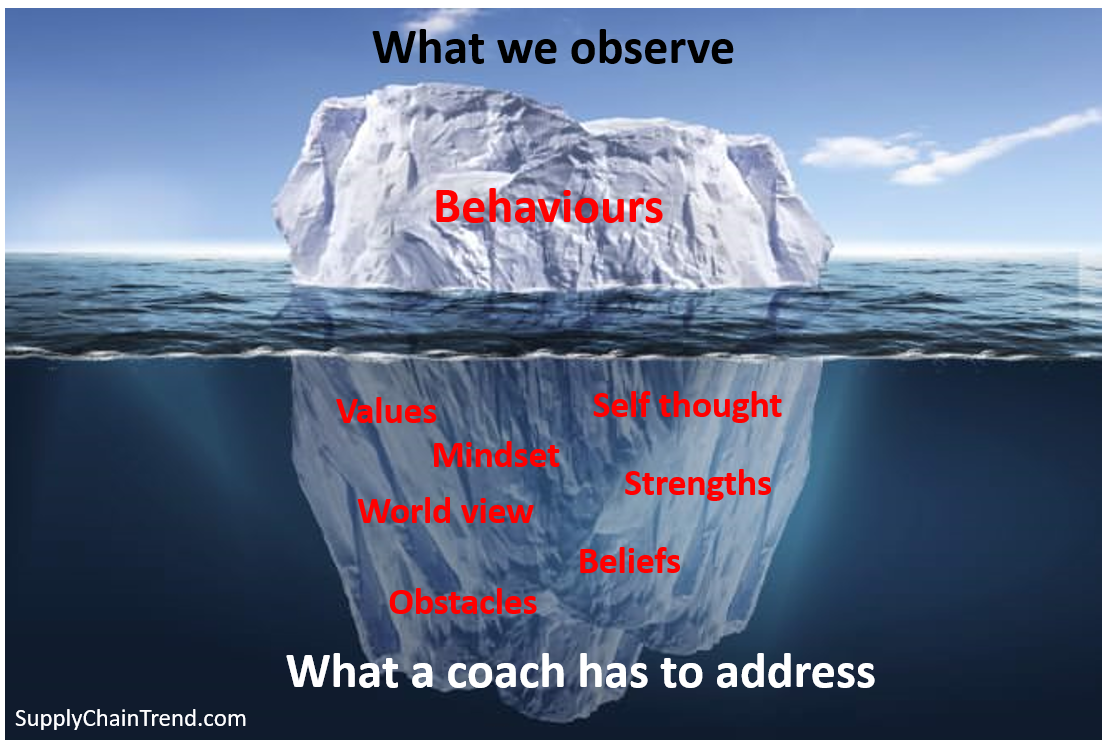
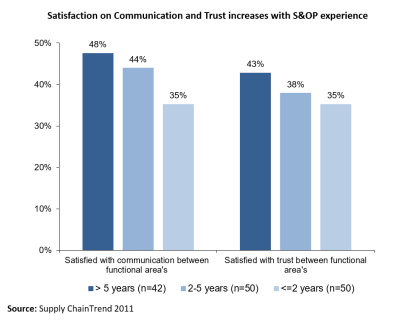
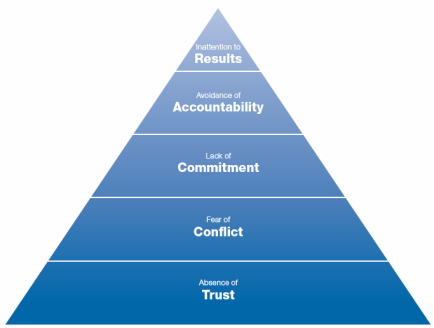
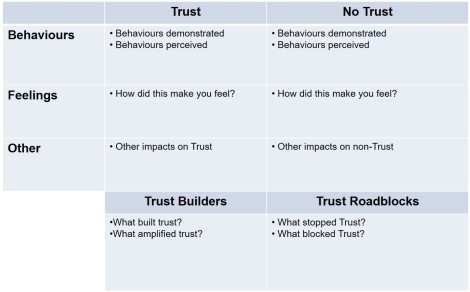
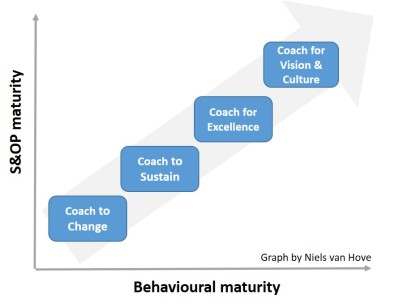
3 thoughts on “4 Phases of Behavioural Change in the Journey to S&OP Excellence #2”